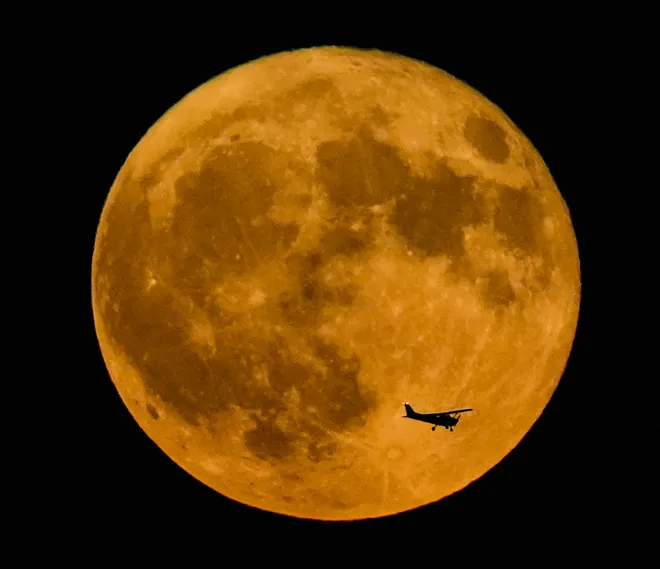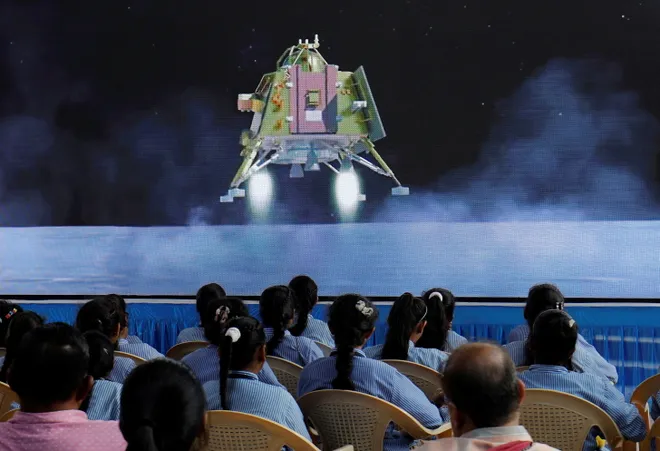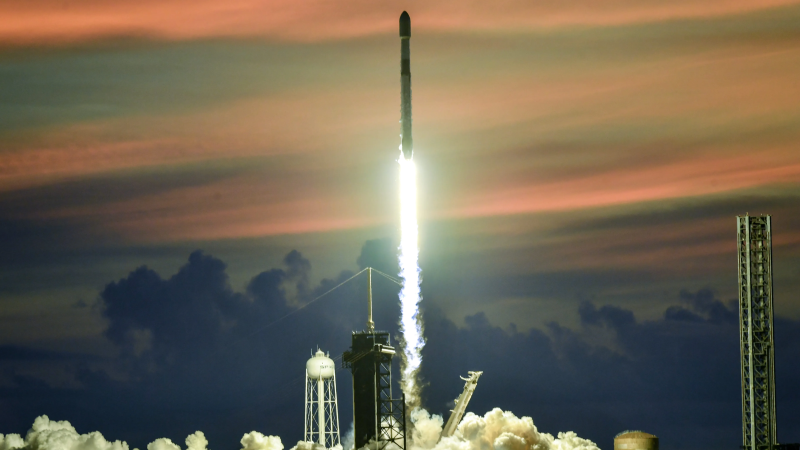India’s lunar lander finds signs a vast magma ocean may have once existed on the moon
- NASA and its rivals in China and elsewhere have long set their sights on the moon's south pole, where the presence of water ice would make deep space exploration possible.
- The team of Indian researchers analyzed Chandrayaan-3 to find signs of ferroan anorthosite, a rock thought to be pieces of the original lunar crust that could have been formed by a magma ocean.
- Similar samples have already been analyzed at the moon’s equatorial region during NASA's Apollo missions and the Soviet Union's Luna missions in the 1970s.
In less than a year since India's historic landing on the south pole of the moon, the nation's Chandrayaan-3 mission is already providing scientists back on Earth with data shedding light on the lunar surface.
A team of Indian researchers uncovered evidence that a vast magma ocean may once have existed on the moon's south pole, which until now has remained largely shrouded in mystery. The researchers' findings were published Wednesday in the journal Nature.
It's not the first region of the moon where signs of a magma ocean have been found, but the discovery may serve as crucial insight into an area that has long intrigued the world's space agencies with designs of sending spacefarers to the lunar surface. NASA and its rivals in China and elsewhere have long set their sights on the moon's south pole, where the presence of water ice would make deep space exploration possible.
Here's what to know about what the Chandrayaan-3 mission uncovered and what it could mean for future lunar exploration.

Chandrayaan-3 rover Pragyan finds evidence of magma ocean
Prior to its 2023 launch, the six-wheeled lander and rover module of Chandrayaan-3 were configured with payloads that would provide scientific data on the properties of lunar soil and rocks.
Once the Chandrayaan-3 lander, called Vikram, made it on Aug. 23 to the lunar surface near the Manzinus crater, the rover Pragyan promptly rolled down its ramp to begin exploring the southern region.
Within the first few weeks, the Pragyan rover used an X-ray spectrometer to take nearly two dozen measurements at various spots along a 103-meter tract of the lunar surface, measuring the chemical and elemental compositions of rocks and dust.
Study lead author Santosh Vadawale of Physical Research Laboratory in Ahmedabad led a team that analyzed the data Pragyan collected. The researchers' findings suggested that the soil around the area largely contained a lunar rock known as ferroan anorthosite.
One of the best-known moon rocks, ferroan anorthosite is thought to be pieces of the original lunar crust that could have been formed by a magma ocean, according to the Lunar and Planetary Institute.
Similar samples have already been analyzed at the moon’s equatorial region during NASA's Apollo missions and the Soviet Union's Luna missions in the 1970s. Now, the rocks' presence in the south pole suggests that what Pragyan had encountered was the remnants of a former ocean of magma.
What are magma oceans?
Magma oceans are thought to blanket a celestial body's surface during the formation of any terrestrial planet and some lunar formations, according to NASA.
Scientists believe that Earth's moon formed when two protoplanets – or developing planets – collided. As a result, the smaller of the protoplanets (the moon) became so hot that its entire mantle was molten magma, or a magma ocean.
If the theory is true, the magma ocean would only have existed from the time of the moon's formation about 4.5 billion years ago to no more than tens of millions of years later.
What is Chandrayaan-3?

Last year, India landed its first spacecraft, the Chandrayaan-3, on the moon around the same time Russia’s first lunar mission in decades ended in failure when its Luna 25 probe crashed into the lunar surface.
India is now among five nations to get an uncrewed craft to the lunar surface after Japan became the latest in January to join the U.S., Russia/Soviet Union and China in accomplishing the feat.
However, what makes India's feat distinguishable is that the lander Vikram was the first craft in history to land near the moon's south pole, deploying Pragyan a day later.
India’s previous attempt to land a robotic spacecraft near the region ended in failure in 2019 due to a software glitch. It entered the lunar orbit but lost touch with its lander which crashed while making its final descent to deploy a rover to search for signs of water.
Since the successful landing, Chandrayaan-3, the Sanskrit word for “moon craft," has been analyzing lunar rock samples and searching for water ice.

Why NASA, others are interested in lunar south pole
Water ice on the moon is the holy grail of future lunar exploration.
NASA and so many other world space agencies are highly interested in the moon's south pole because that's where it's thought that the substance is abundant. One day, water ice could be extracted and used for drinking, breathing and as a source of hydrogen and oxygen for rocket fuel.
The U.S. and China in particular have been locked in a heated space race to get humans back to the moon where astronauts hope to one day establish basecamps of sorts for future deep-space expeditions to places like Mars.
For the United States, American astronauts have not set foot on the moon since the last Apollo mission in 1972, making NASA's Artemis lunar program the first in decades.
Eric Lagatta covers breaking and trending news for USA TODAY. Reach him at elagatta@gannett.com
Disclaimer: The copyright of this article belongs to the original author. Reposting this article is solely for the purpose of information dissemination and does not constitute any investment advice. If there is any infringement, please contact us immediately. We will make corrections or deletions as necessary. Thank you.



